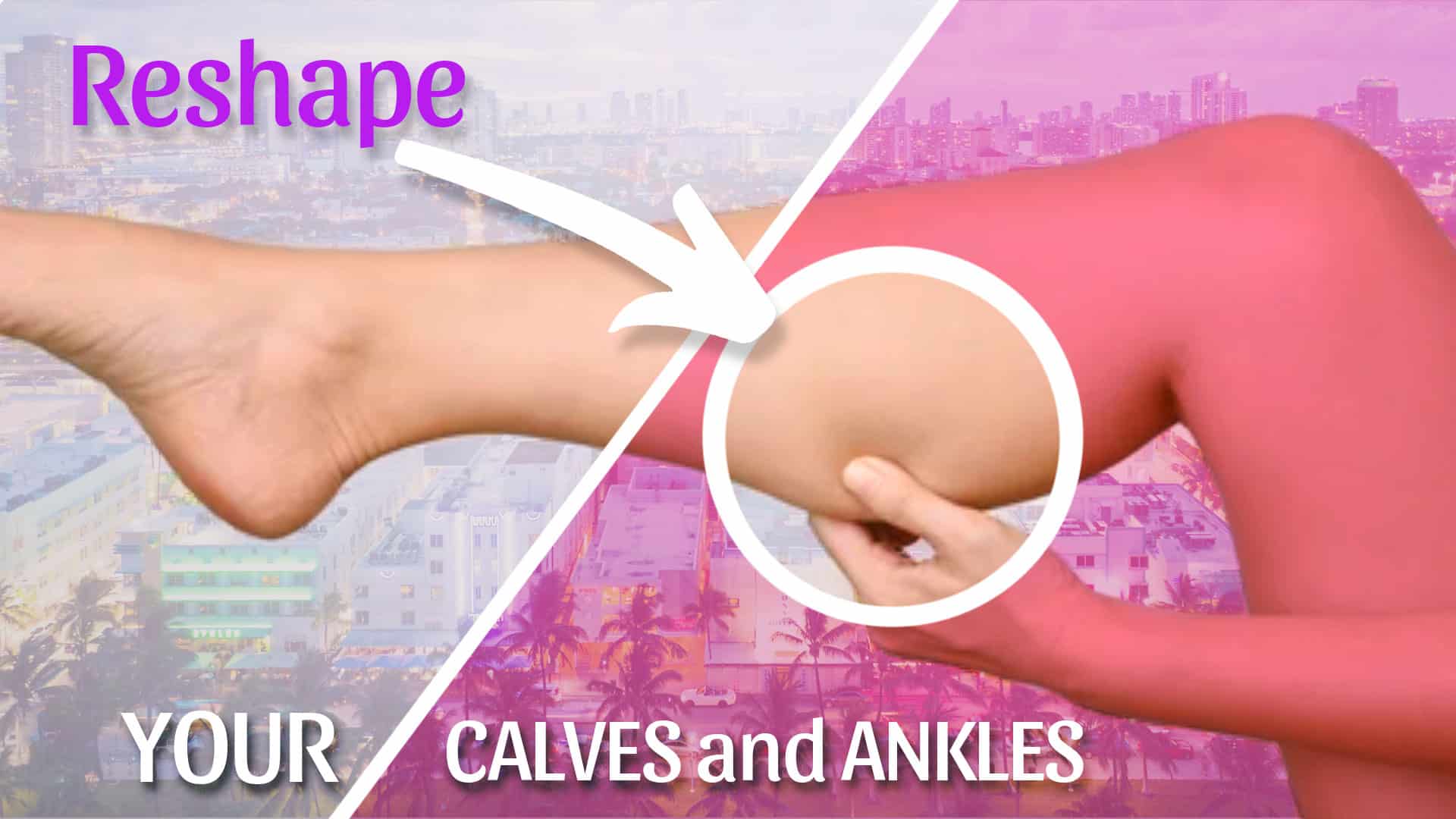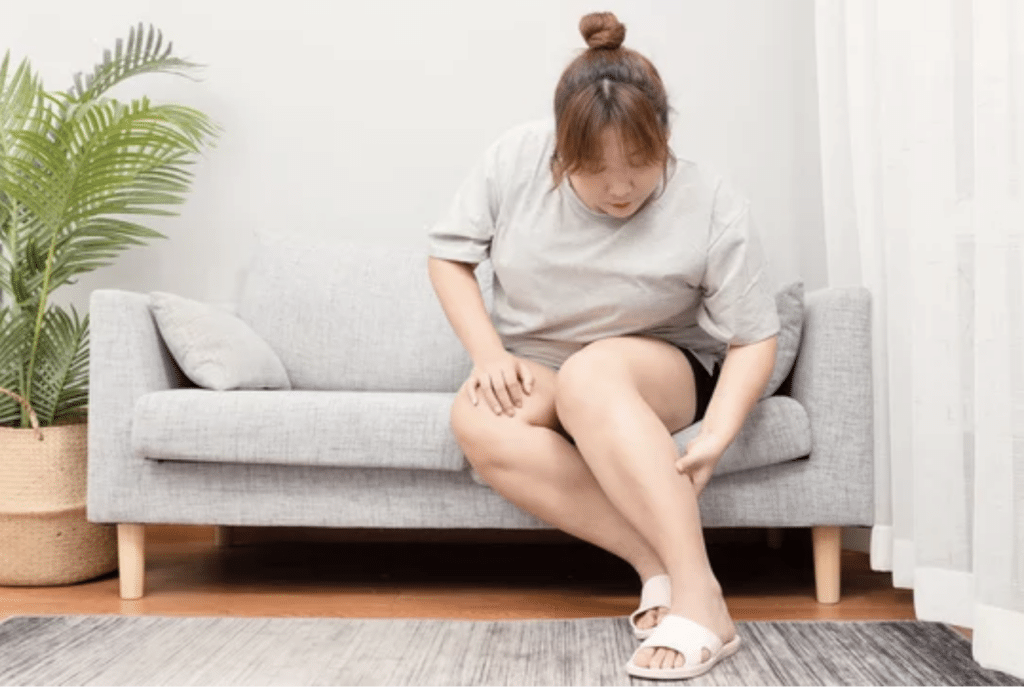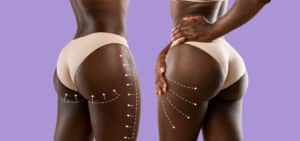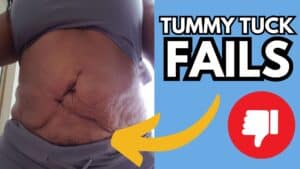
- January 25, 2023
- 6:30 pm
“Unveil Your Best Legs Yet: Discover How Liposuction Can Reshape Your Calves and Ankles”
Table of Contents
Are you self-conscious about the shape of your calves or ankles? Do you feel like you’ve tried everything to slim down these areas, but you need something to work on? Liposuction may be the solution you’ve been looking for. Liposuction is a minimally invasive procedure that can remove excess fat from your calves and ankles, giving you the sleek, shapely legs you’ve always wanted. This surgery can be done under local or general anesthesia and is typically performed as an outpatient procedure. Recovery time is usually short, and you should see results within a few weeks. With liposuction, you can finally unveil your best legs yet! It’s always important to consult with a board-certified plastic surgeon before deciding on a procedure.

“Is liposuction safe for the calves or ankles?”
Liposuction is a relatively safe procedure when performed by a qualified and experienced plastic surgeon. It is essential to note that liposuction is not without risks, as with any surgical procedure. Some potential risks and complications of liposuction on the calves or ankles include infection, bleeding, skin discoloration or irregularity, and nerve damage. Additionally, liposuction is not a weight-loss surgery, and it’s not recommended for those who have a very large amount of fat in the area; it’s a body contouring procedure. It’s always important to have a consultation with a board-certified plastic surgeon to know if it’s a suitable option for you.
“What is the recovery time for liposuction on the calves or ankles?”
The recovery time for liposuction on the calves or ankles can vary depending on the individual and the extent of the procedure. In general, most people are able to return to work and light activity within a week or two after the surgery. Swelling, bruising, and soreness are common after the procedure, but these symptoms typically subside within a few weeks. More strenuous activities and exercise should be avoided for at least 2-4 weeks after the surgery.
Your surgeon will provide you with specific post-operative instructions and guidelines to follow during your recovery period. These may include wearing compression garments, avoiding sun exposure, and taking certain medications to help with pain and swelling. Your surgeon will also schedule follow-up appointments to monitor your progress and ensure that you are healing properly.
It’s important to note that the final results of liposuction on the calves or ankles may not be fully visible for several months as the swelling subsides and the skin tightens. However, you will see a noticeable change in the shape of your calves or ankles immediately after the procedure.

“Is liposuction an effective treatment for calf or ankle fat?”
Liposuction can be an effective treatment for reducing excess fat in the calves or ankles when done by a qualified and experienced plastic surgeon. Liposuction is a body contouring procedure that uses a thin, hollow tube called a cannula to remove unwanted fat deposits. This procedure can be performed under local or general anesthesia and is typically performed as an outpatient procedure.
It is essential to note that liposuction is not a weight-loss surgery, and it’s not recommended for those who have a very large amount of fat in the area; it’s meant to improve the shape and contour of the area. It’s always important to have a consultation with a board-certified plastic surgeon to know if it’s a viable alternative for you and to discuss the potential results and the risks and benefits of the procedure.
After the procedure, patients can expect to see a noticeable change in the shape of their calves or ankles. Recovery time is usually short, and results should be seen within a few weeks.. However, the final results may not be fully visible for several months as the swelling subsides and the skin tightens. It’s important to maintain a healthy lifestyle to maintain the results.
“Can liposuction be used to slim down thick calves or ankles?”
Liposuction can be used to slim down thick calves or ankles, as it is a body contouring procedure that removes excess fat from specific areas. Liposuction can be an effective way to reduce the size and improve the shape of thick calves or ankles when performed by a qualified and experienced plastic surgeon. The procedure uses a thin, hollow tube called a cannula to remove unwanted fat deposits; it can be performed with local or general anesthesia and is typically performed as an outpatient procedure.
It is essential to note that liposuction is not a weight-loss surgery, and it’s not recommended for those who have a very large amount of fat in the area; it’s meant to improve the shape and contour of the area. It’s always important to have a consultation with a board-certified plastic surgeon to know if it’s a suitable alternative for you and to discuss the potential results and the risks and benefits of the procedure.
After the procedure, patients can expect to see a noticeable change in the shape of their calves or ankles. Recovery time is usually short, and the results should be seen within a few weeks. However, the final results may not be fully visible for several months as the swelling subsides and the skin tightens. It’s important to maintain a healthy lifestyle to maintain the results.

“What are the risks of liposuction on the calves or ankles?”
Liposuction is a relatively safe procedure when performed by a qualified and experienced plastic surgeon, but like any surgical procedure, it does carry some risks. Some potential risks and complications of liposuction on the calves or ankles include:
- Infection: Although rare, the infection can occur after any surgical procedure. Signs of infection include redness, warmth, pain, swelling, and fever.
- Bleeding: Although rare, bleeding can occur after liposuction and may require additional treatment or surgery.
- Nerve damage: although rare, nerve damage can occur as a result of liposuction. This can cause numbness, tingling, or pain in the affected area.
- Skin discoloration or irregularity: although rare, skin discoloration or irregularity can occur after liposuction. This can be caused by bleeding, swelling, or injury to the skin during the procedure.
- Asymmetry: Although the procedure is aimed to improve symmetry, small asymmetries may occur; that’s why it is important to have a consultation with a board-certified plastic surgeon to discuss your expectations and the potential results of the procedure.
“Can liposuction be used to improve the appearance of varicose veins in the calves or ankles?”
Liposuction is not a treatment for varicose veins; it’s a body contouring procedure that removes excess fat from specific areas. Varicose veins are caused by a mad function in the valves that control blood flow in the veins; this can cause blood to pool in the legs, leading to the looks of twisted, enlarged veins. Liposuction removes the fat but doesn’t address the underlying issue with the valves; the treatment for varicose veins are sclerotherapy, endovenous laser therapy, or vein stripping.
However, in some cases, liposuction may be performed in combination with other procedures, such as sclerotherapy, in order to improve the looks of the legs and ankles. It’s always important to have a consultation with a board-certified plastic surgeon and a vein specialist to know if it’s a suitable option for you and to discuss the potential results and the risks and benefits of the procedure.
It’s essential to note that liposuction is not a weight-loss surgery, and it’s not recommended for those who have a considerable amount of fat in the area; it’s meant to improve the shape and contour of the area.

“How long does the swelling last after liposuction on the calves or ankles?”
The length of swelling after liposuction on the calves or ankles can vary depending on the individual and the extent of the procedure. In general, most people experience some degree of swelling and bruising for several weeks after the surgery. The swelling typically peaks within the first few days after the procedure and then gradually subsides. The majority of patients will see a significant reduction in swelling within the first two to four weeks, but some patients may experience swelling for several months.
The recovery process and the timeline may vary from person to person, and the swelling can be affected by factors such as the patient’s age, health, and the extent of the procedure. Your surgeon will provide you with specific post-operative instructions and guidelines to follow during your recovery period, including recommendations for reducing swelling, such as using compression garments and avoiding sun exposure and taking certain medications to help with pain and swelling. The surgeon will also schedule follow-up appointments to monitor your progress and ensure that you are healing properly.
“Is liposuction on the calves or ankles a permanent solution for fat reduction?”
Liposuction can be a permanent solution for fat reduction in the calves or ankles when performed by a qualified and experienced plastic surgeon. Liposuction involves the removal of unwanted fat cells from the body. Once these fat cells are removed, they cannot grow back. However, it’s important to note that liposuction is not a weight-loss procedure, and it’s not recommended for those who have a very large amount of fat in the area. It’s a body contouring procedure that aims to improve the shape and contour of the area.
However, it’s important to note that after the procedure, if the patient gains weight, the remaining fat cells in the body can expand, and this can cause the remaining areas of the body to look disproportionate. To keep the results of liposuction, it’s important to maintain a healthy lifestyle, including a balanced diet and regular exercise. Liposuction is not a substitute for a healthy lifestyle, and it’s not a weight-loss solution, but it can help to achieve a more proportionate body shape.
“Can liposuction be combined with other procedures to improve the look of the calves and ankles?”
Liposuction can be combined with other procedures to improve the look of the calves and ankles. Liposuction can be performed in combination with other body contouring surgeries, such as a thigh lift, or a lower body lift, to enhance the overall shape and appearance of the legs and ankles.
Another popular combination is to combine liposuction with sclerotherapy, a procedure that uses a solution to collapse and seal the varicose veins. This combination can be helpful for those who have varicose veins and excess fat in the same area, as it addresses both issues at the same time, improving the overall appearance of the legs and ankles.
Additionally, liposuction can also be combined with calf implants for those looking to improve the shape and definition of their calf muscles.

“How much does liposuction on the calves or ankles typically cost?”
The cost of liposuction on the calves or ankles can vary depending on a number of factors, such as the location of the practice, the experience of the surgeon, and the extent of the procedure.
On average, liposuction of the calves or ankles can cost anywhere from $3,000 to $8,000, depending on the factors mentioned before.
It’s important to note that the cost of liposuction may not be covered by insurance as it’s considered a cosmetic procedure. Additionally, some surgeons may have additional fees for pre-and post-operative care, medications, and follow-up appointments. It’s always important to have a consultation with a board-certified plastic surgeon to discuss the costs and the financing options that may be available.
It’s important to keep in mind that cost should not be the only factor when considering liposuction; it’s important to choose a qualified and experienced plastic surgeon and to weigh the potential risks and benefits of the procedure.
“Is there an upper or lower age limit for liposuction on the calves or ankles?”
There is no specific minimum or maximum age for liposuction on the calves or ankles, as the procedure can be performed on individuals of all ages. However, the best candidates for liposuction are adults in good overall health, with skin that is elastic enough to conform to the new contours of the body after the procedure.
It’s essential to note that liposuction is not recommended for individuals who have a large amount of fat in the area, or for those who have a significant amount of loose or sagging skin. Lipo is a body contouring surgery, not a weight loss procedure.
It’s also important to note that patients who are older may have a slower healing process and may be at a higher risk of complications. It’s always important to have a consultation with a board-certified plastic surgeon to know if it’s a reasonable option for you and to discuss the potential results and the risks and benefits of the procedure.

“Can liposuction be used on both calves and ankles at the same time?”
Yes, liposuction can be used on both calves and ankles at the same time; this procedure is commonly done in a single session. Liposuction is a body contouring surgery that uses a thin, hollow tube called a cannula to remove unwanted fat deposits. This surgery can be done under local or general anesthesia and is typically performed as an outpatient procedure.
It’s essential to note that liposuction is not recommended for those who have a very large amount of fat in the area; it’s meant to enhance the area’s form and contour. It’s always important to have a consultation with a board-certified plastic surgeon to know if it’s a reasonable option for you and to discuss the potential results and the risks and benefits of the procedure.
After the procedure, patients can expect to see a noticeable change in the shape of their calves and ankles. Recovery time is usually short, and you can see results within a few weeks. However, the final results may not be fully visible for several months as the swelling subsides and the skin tightens. It’s important to maintain a healthy lifestyle to maintain the results.
“Can liposuction be used to correct asymmetry in the calves or ankles?”
Liposuction can be used to correct asymmetry in the calves or ankles, as it is a body contouring procedure that can remove excess fat from specific areas and can be used to reshape and contour the legs.
Asymmetry in the calves or ankles can be caused by a variety of factors, including genetics, injuries, or conditions such as congenital defects. Liposuction can be used to remove excess fat and create a more symmetric appearance.
It’s important to note that while liposuction can be used to improve symmetry, it may not be able to completely correct asymmetry, and in some cases, other procedures, such as calf implants or fat transfer, may be recommended to achieve the desired result. It’s always important to have a consultation with a board-certified plastic surgeon to know if it’s a reasonable option for you and to discuss the potential results and the risks and benefits of the procedure.
“How many treatments are required for optimal results on calves or ankles with liposuction?”
The number of treatments required for optimal results with liposuction on the calves or ankles can vary depending on the individual and the extent of the procedure. Typically, one treatment is enough to achieve the desired results. However, in some cases, a touch-up procedure may be necessary to achieve optimal results.
The procedure itself is usually done in one session, but depending on the amount of fat to be removed, the surgeon may have to divide the treatment into two or more sessions.
“Can liposuction be used to treat cellulite on the calves or ankles?”
Liposuction is not typically used to treat cellulite on the calves or ankles. Cellulite is a condition that affects the skin and causes it to have a dimpled or “orange peel” appearance. It is caused by a combination of factors such as genetics, hormonal changes, and lifestyle factors such as diet and exercise. Liposuction removes excess fat, but it does not address the underlying causes of cellulite, such as the fibrous bands that pull down on the skin and create a dimpled appearance.
There are other procedures that can be used to treat cellulite, such as Endermologie, laser therapy, or radiofrequency therapy; these are non-invasive and can be done in conjunction with liposuction.
“How long do the results of liposuction on the calves or ankles last?”
The results of liposuction on the calves or ankles typically last a long time, although the longevity of the results can depend on a number of factors, such as the individual’s age, skin elasticity, and overall health, as well as the extent of the procedure and the patient’s lifestyle habits.
Liposuction removes unwanted fat cells from the body permanently. Once these fat cells are removed, they cannot grow back. However, it’s important to note that liposuction is not a weight-loss procedure and it’s not recommended for those who have a very large amount of fat in the area. It’s a body contouring procedure that aims to improve the shape and contour of the area.
It’s important to maintain a healthy lifestyle, including a balanced diet and regular exercise, to maintain the results of the procedure. Gaining a significant amount of weight can cause the remaining fat cells in the body to expand, and this can cause the remaining areas of the body to look disproportionate.
“What are the best exercises to do before or after liposuction on the calves or ankles?”
It’s recommended to wait for the healing process to be completed before resuming any physical activity. Your surgeon will provide you with specific post-operative instructions and guidelines to follow during your recovery period, including recommendations for when to start exercising again.
In general, the best exercises to do before or after liposuction on the calves or ankles are those that target the calf and ankle muscles, such as calf raises and ankle rotations. These exercises can help to tone and strengthen the muscles, which can help to improve the overall shape and appearance of the legs and ankles.
Here are a few exercises that can be done to target the calf and ankle muscles:
- Calf raises: stand on a step or a weight plate and raise your heels as high as you can, hold for a moment and then lower your heels back down.
- Ankle rotations: Sit down with your legs stretched out in front of you, and rotate your feet in one direction and then the other.
- Seated calf raise: Sit down with your legs stretched out in front of you and raise your heels as high as you can, hold for a moment and then lower your heels back down.
- Heel walks: walk forward on your heels, keeping your toes off the ground.
- Heel raises: stand with your toes on the edge of a step and raise your heels as high as you can, hold for a moment and then lower your heels back down.
“Can liposuction be used to treat muscle imbalances in the calves or ankles?”
Liposuction is a body contouring procedure that removes excess fat deposits; it can be used to treat muscle imbalances in the calves or ankles to a certain extent. Liposuction can be used to remove fat that may be hiding the underlying muscle, allowing for a more defined and balanced appearance.
However, it’s important to note that liposuction is not a substitute for exercises that target muscle imbalances, and it’s not recommended for those who have a very large amount of fat in the area. It’s a body contouring procedure that aims to improve the shape and contour of the area.
If the muscle imbalance is significant, liposuction alone may not be able to correct it. In these cases, other procedures such as calf implants or muscle repair surgery may be recommended, or a combination of liposuction and exercises that target muscle imbalances.
“How should I prepare for liposuction on the calves or ankles?”
Here are a few things you can do to prepare for liposuction on the calves or ankles:
- Schedule a consultation with a board-certified plastic surgeon: This will give you an opportunity to discuss your goals and expectations, as well as to learn about the risks, benefits, and recovery process of the procedure.
- Get a physical examination: Your surgeon may request that you get a physical examination, including blood tests, to make sure you are in good health and that you do not have any medical conditions that could complicate the procedure.
- Stop smoking: If you smoke, you will be asked to stop smoking several weeks before and after the procedure, as smoking can impair healing and increase the risk of complications.
- Avoid taking certain medications: Your surgeon may advise you to stop taking certain medications, such as blood thinners, several weeks before the procedure to reduce the risk of bleeding.
- Arrange for someone to drive you home: After the procedure, you will need someone to drive you home and stay with you for the first night.
- Wear comfortable clothing: Wear comfortable, loose-fitting clothing for your procedure, as you may be swollen for several days after the surgery.
- Follow your surgeon’s instructions: Your surgeon will provide you with specific instructions on how to prepare for the procedure, including what to eat and drink and what medications to take or avoid.
It’s important to follow the instructions provided by your surgeon, which will help to ensure a smooth and safe procedure and recovery process.










